There is a misperception that the Paleo diet is about gorging on meat. And avoiding all carbs.
There is nothing wrong with eating a little meat, especially organ meats. As we saw in Part 2, animal fats are a rich source of Vitamins A and K2. But eating meat three times a day doesn’t make you Paleo.
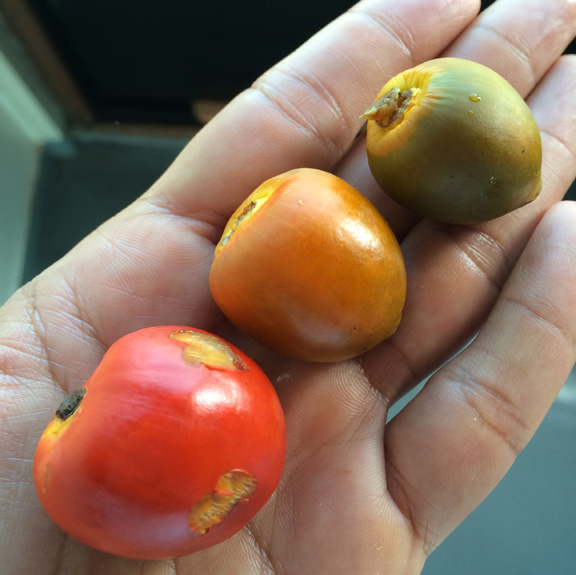
Also, unless you’re pre/diabetic, have high triglyceride/metabolic syndrome, or trying to lose weight to fit into a wedding dress, there is no need to go low-carb. Cutting back on carbs, especially the good kind can be a bad idea.
Grains – carbs at a cost
Most people think of whole grains as a good for you.
Grains kill you very slowly.
There is absolutely nothing essential in grains that you can’t get from fruits and vegetables.
Grains contain phytic acid, which reduces absorption of calcium, magnesium and several other essential minerals.
You already know about gluten. No need to beat that ex horse.
But there are other possibly scarier proteins in wheat like gliadin, glutenin, and germ agglutinin that enter your gut wearing brass knuckles.
Some traditional cultures seem to have figured out ways of reducing the full brunt of these toxins by soaking, sprouting, and fermenting grains and legumes. This is still not ideal, but it helps a little.
The pacifist vegetarian Jain tribes of northern India are expert legume sprouters. They were also huge consumers of butter oil /ghee and home-fermented yogurt. Urban Jains have dropped ghee and embraced wheat in a big way…and seem to be paying for it.
Gut-Friendly Starches
The truly healthy ancestral cultures, however, seem to get their carbs from roots and tubers.
Paleo folks are familiar with Staffan Lindberg’s study of the residents of Kitava, a small island in Papua New Guinea. The locals are remarkably free of modern diseases and they mostly eat root vegetables (yam, sweet potato, taro and tapioca), fruits, coconuts and fish. There is absence of poor heart health, and most other chronic conditions common in the west. Sudden death appears to come only by way of drowning or falling from coconut trees.
Low-carb Paleo folks have often dismissed the starchy, high-tuber consumption of Kitavans.
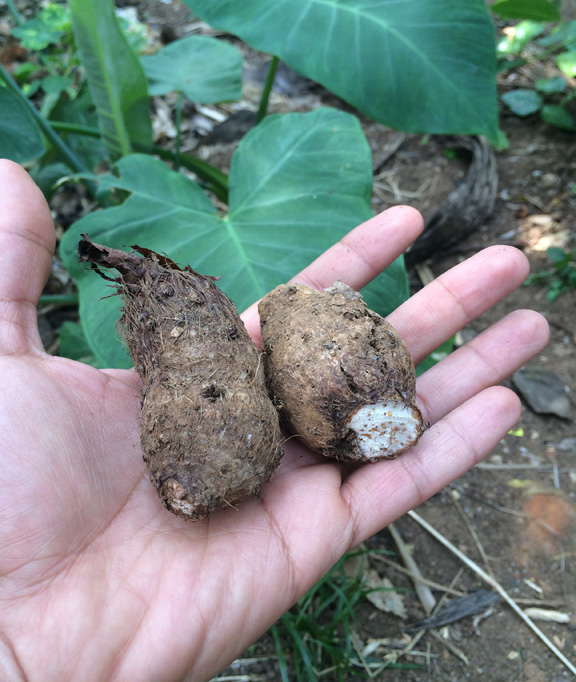
Looking at my notes, I found something remarkable. Three different cultures I’ve studied have a virtually identical diet to the Kitavans.
• Indigenous tribes in northern Amazon (Brazil)
• The Igbo people of the Niger delta (West Africa)
• The Malayalees of south Kerala (India)
Ancestral Northern Amazonian Diet
Manioc and freshwater fish make up most of their diet. Manioc (also known as Cassava or Tapioca) is a starchy tuber. The skin of the tuber contains some cyanide, so it needs to be peeled, soaked and processed carefully.
It’s not uncommon to see sunken canoes in the shallows of rivers, filled with peeled tubers. After a couple of days of soaking, the cyanide will leach out and you’re left with a very safe and gut-friendly starch.
Palm fruits are also a rich source of starch and several other nutrients.
Leafy vegetables, worshipped by westerners, are not a big part of the diet. Cucumbers, peppers, cilantro, and pumpkin are consumed. Legumes are consumed two or three times a year.
Dairy, wheat, and grains are not consumed. Meats like beef and chicken are eaten very rarely…but when they do, they leave no part of the animal to waste. Raw Brazil nuts, a nutritional powerhouse, are used to make ‘milk’ – crushed or blended with some water. The soft nut is also scraped and used like butter on top of manioc flour pancakes – a delicacy that I miss every single day when I’m not in the jungle.
There are lots of seasonal fruits in the jungle, some of which, like Acai and Cupuacu are eaten almost daily. Camu camu fruit, available freely along any river, is unbelievably high in Vitamin C.
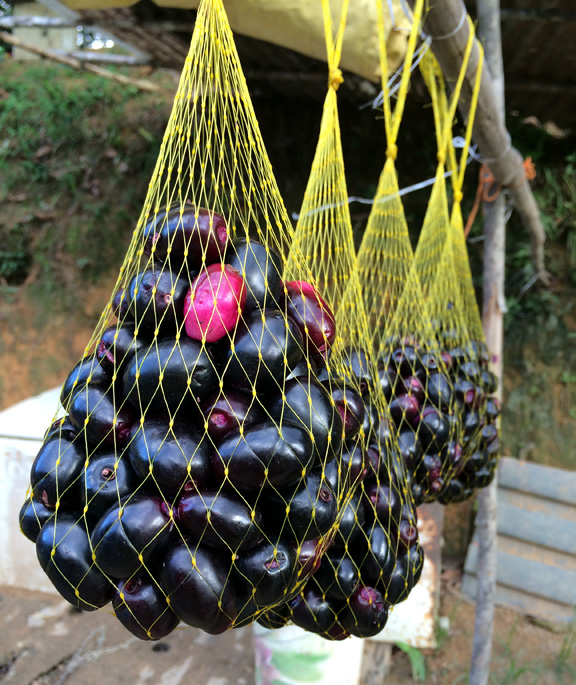
Ancestral diet of the Niger Delta
Yam forms the basis of this diet. Cassava, taro and plantains are consumed in large quantites.
Yam and cassava in many different forms are eaten with a fish or goat soup of stew. Those living along the waterways eat fish on a daily basis. Garri, cooked tapioca flour, is the common man’s food.
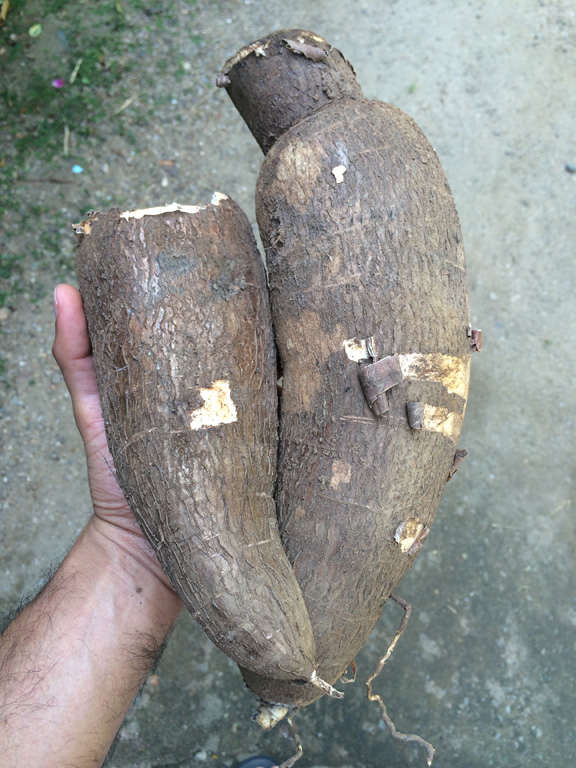
The Igbo people eat a little more meat (bush meat – small antelopes, monkeys, etc.) than the Kitavans. Traditionally, the Igbo used red palm oil as their primary cooking oil.
Bitterleaf (similar to spinach) and Breadfruit are common vegetables.
Today, rice, vegetable seed oils and chicken have replaced a lot of the traditional foods.
Traditional diet of the south Kerala fishing villages
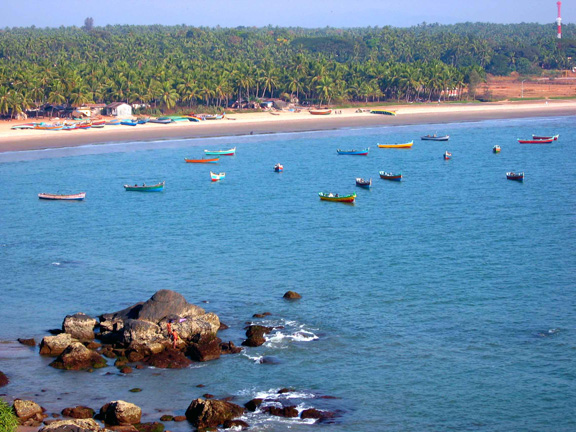
Clearly, they have access to fish and coconuts. Tapioca, yam and several types of root vegetables are cooked with coconut oil.
Tapioca, fish, and coconut form the basis of at least two meals every day.
Several leafy vegetables and plantains are consumed almost every day. Turmeric is used daily.
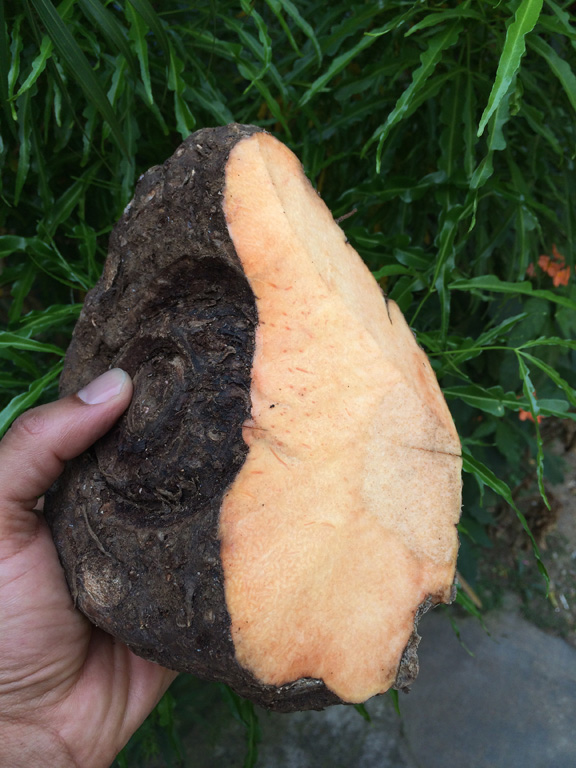
Of the three non-Kitavan diets described here, this was the one most like Kitavan. And it’s also the diet that’s worsened the most in the last 50-100 years. Rice has almost completely replaced root vegetables. And Omega-6-rich seed oils have replaced coconut oil.
Frequent and excessive (almost candy like!) antibiotic abuse appears to have wiped out many of the probiotic organisms needed to digest prebiotic soluble fibers in tubers. I’ve never seen people complain so much about digestive distress after eating root vegetables. Not surprising. But they haven’t made the connection yet.
Many middle-class people from Kerala now hold traditional root vegetables in disdain.
According to a doctor employed at a free government hospital, when the volume of patients gets overwhelming, nurses are instructed to send everyone home, after distributing free antibiotics to all in the waiting room.
Words fail my outrage.
Common dietary threads
The main dietary thread that connects all these cultures is consumption of friendly starches in the form of roots, tubers and plantains.
The following commonalities are secondary:
• Daily or near-daily fish consumption
• Minimal (but adequate) local leafy vegetables
• Seasonal fruit consumption
• Reliance on saturated fats
The secondary points are nothing new to followers of the Paleo diet. But the heavy reliance on roots and tubers may be novel to many.
There is a very important reason why I think this is crucial: tubers are full of prebiotic fibers.
No, not the insoluble, bark-like roughage marketed in boxed breakfast cereals. That’s not the kind of fiber you really want.
You want the soluble kind that humans cannot digest, but the bacteria in your intestines love.
There are several kinds of prebiotic fibers in tubers, plantains, vegetables, fruits and nuts. Each kind of prebiotic fiber sustains a different community of probiotic flora in different sections of your gut.
Amazonian fruits are also very high in polyphenols, yet another class of prebiotic.
Without these fibers, these bacteria either starve or die.
As if that weren’t enough, we squirt anti-bacterial potions into every possible orifice. Triclosan and Listerine and Summer’s Eve! Oh my!
I’m surprised there isn’t a product to sterilize belly buttons.
We’re waging chemical warfare against ourselves.
Why should we care?
We should care because the last decade has opened scientists’ eyes about the far-reaching health effects our bowel bugs can have.
Each of us has a probiotic fingerprint that’s established by age 3.
There is mounting evidence that several ‘health states’ like obesity, rheumatoid arthritis, diabetes, and celiac each have unique probiotic fingerprints.* Fingerprints that cannot be altered by probiotic supplementation alone.
The question to answer now is whether the disease caused the compromised fingerprint or vice versa? And even more importantly, will reverting to a more ideal microbiome fix the health problem? I don’t have the answer, but a lot of things are pointing to a preceding probiotic compromise.
The prebiotic and soluble fiber-heavy diets of these cultures suggest that our ancestors had figured out over eons that such a diet made them thrive.
I just happened to stumble across these findings when I was entering notes into my computer after my recent trip to the Amazon. But I’m far from alone in coming to this conclusion. Paul Jaminet and Shou-Ching Jaminet, Ph.Ds have wonderfully articulated all this in their book, Perfect Health Diet. Possibly the best health related book I’ve ever read.
Don’t look to supplements for a complete cure
I’d guess that only 5% of the species in our guts are available as supplements. One course of antibiotics can permanently alter your microbial fingerprint.
Same goes for prebiotic fiber supplements – we are just starting to understand the fiber needs of each bacterial community.
Other factors…
They were also in constant contact with nature. They were all, in effect, organic farmers, exposed to dirt and animals at all times. Washing hands after each activity was not the norm. They were covered with bacteria. (Hey new mom – how quickly can you draw that portable Purell bottle from your purse?)
They walked. A lot. Usually in the sun, soaking up Vitamin D3. Most adults probably walked 5 miles a day.
They were also intensely connected to their communities. Our understanding of the influence of social structure on human health is in its infancy. I look forward to learning more.
There’s a lot more to Paleo diet than just eating more meat.
Looking backwards to a simpler, more ancestral way of eating and living will help you in ways modern medicine cannot.
Some people call it Paleo. I call it eating real food – stuff that was alive a few days ago. And while you’re out shopping for real food, pick up a new root vegetable you’ve never tried before. Or maybe a plantain.
*These statements have not been evaluated by the Food and Drug Administration. This product is not intended to diagnose, treat, cure, or prevent any disease.

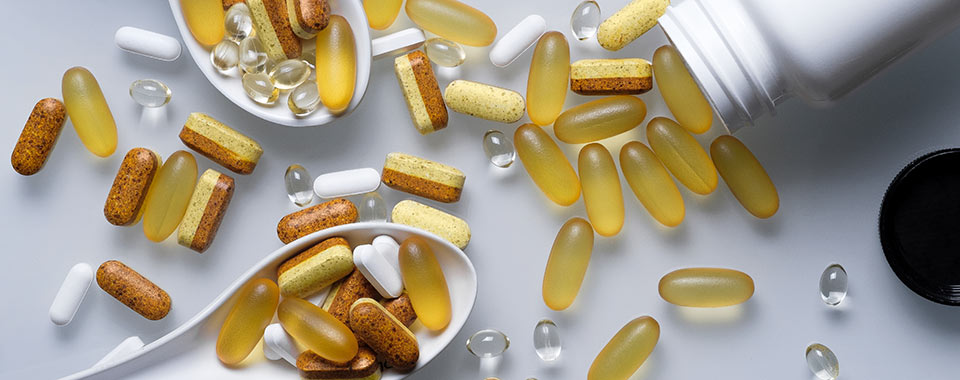

Hi Vin,
Thanks for another great post. What do you think of that old standby, the potato? I guess potatoes count as tubers, but they seem to have a very bad reputation here in the US. Personally, I eat them fairly frequently because I have food allergies and potatoes are one of the thing I can eat. Usually I have a few baby potatoes, with the skin on, and a bit of sour cream from grass-fed cows. I’ve always felt they were healthy, and maybe you agree? Most people seem to think they’re fattening and lack nutrients.
Hi David – nothing wrong with good ol potato. If you cook it and let it cool, the amount of fiber that cannot be digested goes up a little and that makes cooked and cooled potato even better for your gut health. Of course, if you have blown your metabolic health like I have, then it’s probably best to go easy on potato. But I see no reason to avoid it. The only parts of potato that contains some minor irritants are in the skin, so I get rid of the skin. Sour cream from grass-fed cows is fine…good actually, if you don’t have dairy intolerance.
Hello Vin!
I just wanted to say thank you for everything you do here on omegavia.com
Not to sound like a creep, but im pretty sure I owe you my life. I have had high triglycerides for about the past 15 years (im 38) In my 20’s it was constantly in the 700’s, hit 950 in 2008 (Dr put me on Lovaza) and just 3 weeks ago I hit a record 1154. My dr freaked, said to stop Lovaza and start on Lopid (i refused). She also instructed me to immediately begin a low fat/whole grain diet (HA!) After reading your blog and the comments below them, I had a wealth of information that I had never heard before. Carbs!! Could they be the cause for my poor health? Well since 2/20 i havent had any soda, or bread, cereal, potatoes or sugar in my coffee. I eat trader joes omega 3 eggs every morning for breakfast, usually a turkey and cheese wrapped in lettuce for lunch. Dinner has been a variety of grilled meats or wild salmon. Plenty of green veggies and sweet potatoes. Ive also been taking 4 omegavia capsules. I had blood work taken last friday to see if there was any improvement in just 2 short weeks.
SO, my first labs were:
Chol- 289 , Tri-1154, HDL-30, LDL-cannot calculate
Latest labs:
Chol-220, Tri-124, HDL-38, LDL-157
Its amazing! I have never seen my triglycerides that low, and, this is the first time ive seen my LDL reading. I cannot believe the change in 14 days, and I havent had 1 Lopid. Only omegavia, vitamin c and magnesium daily. I wish i could post screenshots to show the lab results. Thank you sir!!! You truly have saved my life. I will be eternally grateful for this. I apologize for this insanely long comment, but it was easier than driving to California to shake your hand personally!
Oh wow, Jimmy! Thank you…but you are handing over waaaay more credit than due. The way I see it: you were concerned about your health. You took charge and did the research. You changed your diet and you got the results. So you get the credit!
With your diet change, I’d definitely expect a big drop in TG, but not this much in so short a time! It normally takes 6-8 weeks before you see full impact of diet change and Omega-3s. So talk to your doctor and get it re-tested in about 6 weeks. And remember, exercise, even if it is just walking, will help too.
Remember that not all carbs are bad. Get your carbs from vegetables. Thank you and keep us posted.
Well Mr Kutty, just had my latest lab work done.
The results are still good:
Chol – 220, Tri – 133, HDL – 46, LDL – 147
Also thought id throw in the fact that my testosterone was 253 back in Feb. Since then I have lost 30 lbs and my testosterone is now 473. That increase definitely has me feeling more peppy.
The only negative for me is I seem to be much weaker in the gym. I was 245lb and lifted weights 5 days a week. I had a 48″ chest, but thats now down to 45″. Went from benching 225lb for 18 reps, down to 10 now. I assume this is because of the depleted glycogen stores? I definitely seem to tire out much faster. Im still very happy about my health being in a better position, but any tips on what i can do to get my strength back?
Again THANK YOU!!! The information here is life changing!
Hi Jimmy – glad to hear your weight and testosterone are going in the direction you want. I am not clear on what you eat, so you may want to sit down with a local dietitian or strength coach to see if you’re slipping somewhere. Strength can be regained with workouts, rest, and time. I doubt your glycogen is depleted.
Hello!
I just came across your website TODAY! I went to my dr in February and his concerns were high LDL and high triglycerides (347 I believe). He talked to me about medications but I know my dr pretty well and he’s not a “medication” dr and only likes to give meds if absolutely needed. But I told him I wanted to fix this without medication, and he agreed. He is giving me until mid-May. Then he talked to me with his “opinions”, and said, seriously, drop most of the carbs. Get rid of everything white. Low-carb was what he thought was best and what he recommended. Unfortunately I am non-diabetic hypoglycemic and have hypothyroid disease for which I take Synthroid. Also, I am about 70 pounds overweight (yikes!). A number of years back I tried all-in Atkins. My sugar ended up as low as 52 and I had to spend a couple days in the hospital. Anyway, that did it for me.
Since this last dr appointment, I have been trying to do low-carb the best I can without my sugar getting too low. But now that I have found your site, I have found very useful information. I plan on adding more healthy fruits and sweet potatoes to my diet. I have little issue with getting rid of everything else to get healthy. I am a bit unhappy with the no alcohol part. Not sure I can part with me and my husband sitting outside at night relaxing with cold beer or a bottle of wine. =0( But anyway, thank you so much for this site and your info. I am making my new shopping list as I read. And I am actually looking forward to my next dr’s appointment!
Hi Samantha – you may be one of those people who needs to control triglyceride with low to moderate carb diet (as opposed to strict very low carb) + exercise. I’d say cut out all juices, sodas, grains, alcohol, and processed foods, sweets and desserts. Add 3000 mg of Omega-3 per day. My triglyceride journey is here: http://www.omegavia.com/cut-triglycerides-in-half-without-lovaza-or-fish-oil-1/ Hope you find it useful. If you do this, your TG will be around 150-200 in 2 months. And I’m guessing that you’ll be 20 lbs lighter. Just a guess, but would love for you to come back in two months and tell me how far off I was.
PS: you have a good doctor.
Hey Vin:
Interesting op-ed today in the NYTimes from Dean Ornish (below.) He talks about the dangers of TMAO derived from red meat. Did some reading and it seems there is conflicting evidence relating to the prevalence of L-Carnitine (the precurser) in various foods. (See the post from Jarrow, also below.) Some say it is actually higher in fish than red meat. But it it appears the make-up of your gut flora really determines the conversion rate to TMAO. (That, and L-Carnitine is necessary for a variety of biological functions.) Wondering if there is much L-Carnitine in fish oil? Also, any other comments would be appreciated. I eat very little red meat. I do like to add some organic whey protein powder to my green smoothies after a workout. Thanks!
http://www.nytimes.com/2015/03/23/opinion/the-myth-of-high-protein-diets.html?hp&action=click&pgtype=Homepage&module=c-column-top-span-region®ion=c-column-top-span-region&WT.nav=c-column-top-span-region
http://www.jarrow.com/articles/3/Carnitine,_the_Culprit_in_Red_Meat_and_the_Heart
Hi Brian – this is too big a subject to tackle in the comments section all the way down here. But I’ll throw out a few inflammatory info-nuggets and let you go from there. Ornish’s intervention works because it is multi-pronged: besides avoiding meat, they tell people to avoid sugar, flour, processed foods and eat a lot of vegetables and some fish oil, manage stress, exercise and get supportive counseling. But meat gets all the focus. I think patients who follow Ornish’s protocol notice improvements DESPITE meat avoidance, not BECAUSE of it. I would alter his protocol by increasing root veggies and tubers, adding eggs, seafood, occasional liver, grass-fed butter and yes, some red meat. If you took the Kitavans I talk about above and put them on the Ornish diet, I’m guessing they’d develop some modern diseases. But an average American will thrive on an Ornish diet…initially at least.
The whole TMAO thing is nonsense. The study has all kinds of confounders and is way too weak to draw any kinds of such conclusions. I think Chris Kresser dissected that nicely when all this went down last summer. And no, no carnitine in fish oil. The only good thing about the whole TMAO train wreck was that yet another study pointed to the importance of gut flora.
More comments on Ornish’s NY Times post here: http://www.proteinpower.com/drmike/low-carb-diets/dr-dean-ornish-blasts-high-protein-diets/
Hi Vin- I recently started a low carb high fat diet about a week ago and now having problems with regularity. I was wondering if you have heard of a prebiotic supplement called kiwi klenze by xtendlife and if you thank it may help.. Also do you recommend there total balance multivitamins?
Hi Keynen – this is a common problem with people who go on high-fat, low-carb diet. While this type of diet can do wonders for you, many people lose their regularity because all the fiber they were getting came from carbs – frutis and veggies. My suggestion is to get more soluble fiber from prebiotics and veggies. Not a fan of the kiwi product you mention. If you starve your probiotic bacteria, you are not really better off. Increase your veggies.
No, I don’t recommend that multivitamin.
Thank you Vin! Could you recommend any supplements that can help me get more prebiotics? Also was wondering your view on total balance multis as to why you wouldn’t recommend it. I really appreciate it, thanks again.
Hi Keynen – there are lots of prebiotics available on Amazon. Inulin, FOS etc. come to mind. To get the ultimate prebiotic you will need to take several products. You need different soluble fibers for different bugs in different parts of the gut. I do this at home – I have a recipe of about 15-20 different fibers that I blend. No such product exists, but keep your fingers crossed – we may introduce it under our InnovixLabs line sometime in early 2016.
I am not a fan of any multi – most of them have the wrong amounts of nutrients and usually in the wrong forms.
For background: My son did a paleo diet and at some point combined with low calorie. In the last year or so. Quite some years back he had frequent antibiotics for probably a few years for ear and sinus infections. In between this he had his sugar years (dew this dew that).
Since we don’t eat much for processed foods and considering all the vegtables he eats I would not have expected constipation issues. But this article helps fill in the pieces.
The doc is suggesting magnesium to help but he has low blood pressure. Besides if the food is not getting digested properly then is he starving on a full stomach?
He wants to stick with paleo (tubers and vegtables with the protein). Are there probiotics or prebiotics that would help with digesting sweet potatoes, vegetables and greens? Should I be looking at more than sauerkraut, kamboochia and yogurt?
Hi Steve – lots of causes for constipation, not just lack of fiber. I suggest you have him consult with an function or integrative medicine MD to get to the root cause. Magnesium can help. Even though a paleo type diet with tubers, veggies and protein is near perfect, there may be issues with digestion…his doctor ought to be able to help. May need digestive enzymes more than probiotics.
Hey Vin,
Great article… Recently I have been on a Ketogenic diet (aka low carbs + high fat )… A lot of people tout its benefits but its been feeling pretty weird passing up on yams, plantains, fruit, ect in the grocery store… Just doesn’t seem right. This article seems to confirm that. Would you recommend reincorporating these things in my diet right away and if so why are paleo folks so convinced low-carb is the way to go?
Side question: Do you recommend regular consumption of any fish besides salmon? (sardines, herring, pollock ect)?
Thanks,
Sullivan
Hi Sullivan – some people with neurological issues need to be on a ketogenic diet. The rest of us can remain on less severe diets with some whole foods, unprocessed carbs – think plantains, yams, some berries, etc. The biggest issue that I see with ketogenic diets is the harm a low-fiber diet can do to your gut microbiome because ketogenic diets are very low in prebiotic fiber. If you can combine ketogenic diet with foods rich in prebiotic fibers, like onions, leeks, artichokes etc, you may be fine. Part of the reason why I formulated this product for our sister company: http://innovixlabs.com/products/broad-spectrum-prebiotic/ There are several other products like this, so you have choices.
Paleo folks like keto diets because it undoes some of the damage and the weight gain caused by high-glucose/insulin diets. But then you may be creating other issues by starving your gut bugs – this happened to me a few years ago and that’s why I decided to make the product linked above.
Yes, if you like sardines or anchovies, they are very high in Omega-3 – they are great.
Thanks for the quick reply Vin,
It is just as I feared. I have been feeding myself with healthy probiotics (kefir, sauerkraut) but starving them of fuel without prebiotics! I am definitely going to add some these prebiotic starches to my diet and look into the your supplement (I already have EPA 500 and magnesium, which I really like.
Would you say berries are the best fruits to be consuming regularly? Problems with any others?
Also if we are setting money issues aside, do you think its better to avoid pesticides and try and go for organic produce?
Thank you!
Sullivan
Hi Sullivan – yes, deep colored berries are the best fruits in my opinion. Although nothing wrong with the more common varieties if consumed occasionally. The common ones – apples, bananas, pears, grapes are really high in sugar. I generally prefer organic fruits and veggies.
Hi Vin,
My husbands triglycerides are through the roof 1700, total cholesterol +400 he does have diabetes. He has started on 4 grams of Lovaza. As I look at your plan I am encouraged but would like to know if using honey or agave nectar would hurt and what about using almond or coconut flour?
Hi Tammi – honey and agave nectar will definitely hurt. Almond and coconut flour are OK.
If he has 1700 TG after taking Lovaza, it is time to see a functional medicine MD and a primal/paleo type nutritionist who can put him on a low-carb + high fiber diet + high olive oil diet.
Hi Vin
What do you think of raw potatoe juice? I’ve been juicing potatoes lately with a green apple and some ginger. I’m gonna throw in some fresh turmeric next time.
Thanks
Hi Stan – if you can stomach it and are not allergic to nightshades, it’s OK, I suppose. Juicing is OK for people who’d never consider eating fruits or vegetables. As an introduction to green stuff for people living on pizza and coke, yes, juicing is fine. But you’re better off eating the real things – vegetables and fruits. Juicing keeps the sugar and eliminates a lot of the fiber, defeating the purpose in my opinion. Ginger and turmeric are anti-inflammatory, so, yes keep taking those.
Hello. Just found your articles, and I think they’re great! I noticed you didn’t mention arrowroot anywhere in the article above. What do you think of it? I tend to use it in my baking. Would tapioca vs arrowroot would be a better option for my regular baking usage (both are readily available and cost effective for me).
Hi Amy – in short, yes, you can use arrowroot flour for baking.
I don’t know if it is better than tapioca. You can use these types of ingredients occasionally. But replacing wheat flour with these types of better-than-wheat type flours doesn’t fix the problem that got us in this health mess. All flours are highly processed and can increase blood glucose and insulin – this is a problem. Yes, arrowroot may be better than wheat flour but it misses the reason why ancestral eating (paleo) is so healthy…ancestral eating is mostly unprocessed. So, use flours as a treat.